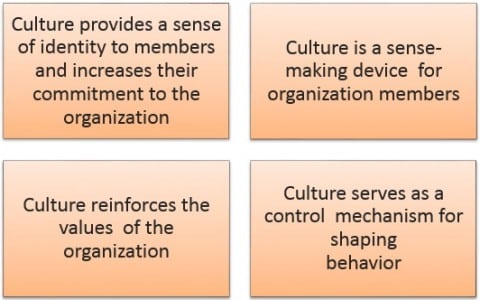Digital Marketing Course
- 16k Enrolled Learners
- Weekend/Weekday
- Live Class
This webinar on ‘Why is Organizational Culture So Important?’ focuses on the following:
Simply stated, organizational behavior stands for the shared values, principle, traditions and ways of doing things that influence the way members in an organization act. It is all about the set of important assumptions, often unstated, that members of an organization share in common. It speaks about the personality of a company and the style in which it does things.
Important elements of the definition may be stated thus:
 Dimensions of Organizational Culture
Dimensions of Organizational CultureResearch suggests that the following dimensions of organizational culture separate companies from one another:
(J. Martin, Culture in Organizations, New York, Oxford University Press, 1996)
There are broadly two types of organizational cultures:
Culture is passed on to employees in numerous ways. The most significant ones may be listed thus:
(Source: H.W. Trice and J.M. Beyer, “Studying Organizational Culture through Rites and Ceremonials,” Academy of Management Review 9 October, 1984)

Each organization’s culture is unique. However, there exist four general types of organizational cultures that are useful for comparing organizations:

Following are important functions of organizational culture:

The pie chart below aptly describes the value of organizational culture in job seekers today:
Before sustaining and perpetuating culture, it has to be created within the organization. One prominent way to do this is through Socialization. Socialization is a process through which a new recruit begins to understand and accept the values, norms and beliefs held by others in the organization. The HR department representatives help new recruits to “internalize the way things are done in the organization”.
Socialization, in fact, is a three-step process
Once established, company culture may be perpetuated:
(J.P. Kotter and J.L. Heskett, Corporate Culture and Performance, New York, Free Press, 1992)
Organizational Culture, as stated previously, is generally stable. However, it is not immutable. Culture is something which evolves over a period of time—in response to changes in environment, particularly changes in composition of workforce, changes in top management, changes brought about by mergers and acquisitions, deliberate attempts to change the structure of an organization, changes brought about by a crisis etc.
In any case, there is growing evidence suggesting likely change in organizational culture due to the occurrence of any of the following:
(Kilmann, et al and P.J.Frost, et al)
Q1. Are there any measurement scales for organizational culture?
Culture is more of a soft factor and cannot be measured directly, but certain things within culture can be measured for e.g. the measurement of innovation and entrepreneurship within the organisation affecting culture
Q2. What should be done when culture is imposed?
Culture is an underlying factor in an organization and cannot be done away with. It will be imposed to some extent when someone moves in a new organization, as its motive is to create shared value and purpose.
Q3. Is culture qualitative?
Yes, culture is definitely qualitative than quantitative as it is related to human behavior and interaction. It can make us feel various emotions.
Q4. Does culture improve/disturb productivity?
It depends on the type of culture and environment prevailing in the environment along with several other factors. For e.g. certain organizations promote a centralized culture where everything is interconnected and hierarchical rather than more autonomous which can have a different impact on different individuals.
Q5. Any guidelines to design a culture? How does organizational strategy define culture?
Again it depends on what type of culture you wish to establish, on what the organization wants as well as what the employees want. There is a strong relationship between strategy and culture – culture can have a big impact on decision-making.
You can view the webinar PPT below:
Got a question for us? Mention them in the comments section and we will get back to you.
Related Posts:
Get Started with Organizational Behavior
 Thank you for registering Join Edureka Meetup community for 100+ Free Webinars each month JOIN MEETUP GROUP
Thank you for registering Join Edureka Meetup community for 100+ Free Webinars each month JOIN MEETUP GROUP